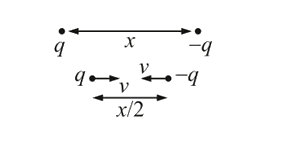Text Solution
Verified by Experts
|
Topper's Solved these Questions
ELECTROSTATICS
VMC MODULES ENGLISH|Exercise LEVEL - 1|105 VideosView PlaylistELECTROSTATICS
VMC MODULES ENGLISH|Exercise LEVEL - 2|60 VideosView PlaylistELECTROSTATICS
VMC MODULES ENGLISH|Exercise LEVEL - 0 (SHORT ANSWER TYPE )|27 VideosView PlaylistELECTROMAGNETIC INDUCTION & ALTERNATIVE CURRENT
VMC MODULES ENGLISH|Exercise IMPECCABLE|52 VideosView PlaylistENERGY & MOMENTUM
VMC MODULES ENGLISH|Exercise JEE ADVANCE (ARCHIVE) - TRUE/FALSE TYPE|1 VideosView Playlist
Similar Questions
Explore conceptually related problems
VMC MODULES ENGLISH-ELECTROSTATICS-LEVEL - 0 (LONG ANSWER TYPE )
- Two particles have equal masses of 5.0 g each and opposite charges of ...
03:42
|
Playing Now - Show that the tangential component of electrostatic field is continuou...
02:22
|
Play - The top of the atomosphere is about 400 kV with respect to the surface...
04:03
|
Play - A man fixes outside his house one evening a 2m high insulating slab ca...
02:23
|
Play - The discharging current in the atmosphere due to the small conductivit...
02:12
|
Play - What are the forms of energy into which the electrical energy of the a...
02:08
|
Play - A particle of mass m and charge -q enters the region between the two c...
03:05
|
Play - A small metal sphere carrying charge +Q is located at the centre of a ...
03:13
|
Play
